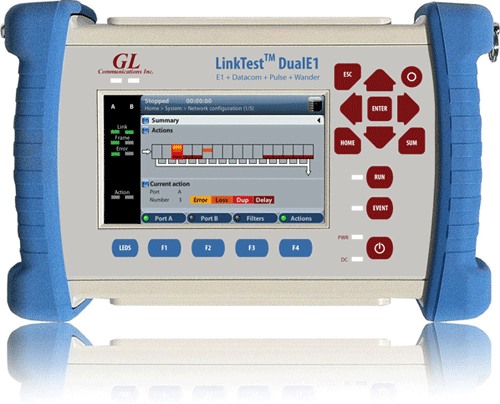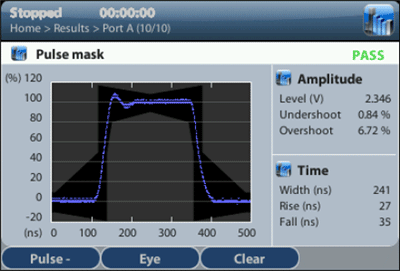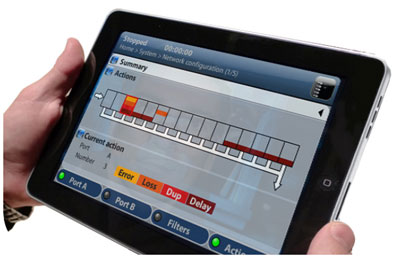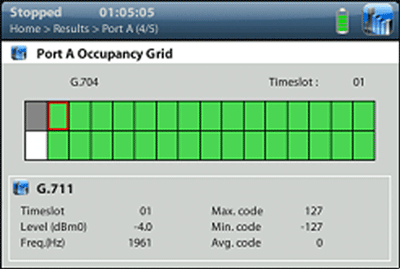Newsletter: GL Announces LinkTest™ Dual E1
Welcome to another August 2012 issue of GL Communications' Newsletter providing information and insight into our latest product LinkTest™ DUAL E1 - A user-friendly, hand-held, battery operated, E1 test and measurement device with standard basic features plus sophisticated Jitter, Wander, and Datacom testing options at very low cost. One unit provides most if not all the testing features you may need in the field to make troubleshooting easy and quick.

Overview
GL's LinkTest™ DUAL E1 is a hand-held dual-port tester for E1 and data communications (V.11 / X.24, V.24/RS232, V.35, V.36/RS449, EIA-530, EIA-530A) interfaces. Port A is full-featured 2048 kb/s interface. Port B usage is configurable (2048 kb/s TX/RX, co-directional, or for clock input).
The LinkTest™ DUAL E1has an external DC input and internal rechargeable batteries. This makes the tester suitable for field-testing applications.
With the support of a large range of software options for E1 services and sub-rate multiplexing, the LinkTest™ DUAL E1unit provides a scalable test solution for E1 and datacom testing. It provides a large, clear screen with a full set of physical layer tests for E1 balanced and unbalanced circuits including BERT, VF, round trip delay and signal level.
Applications
The LinkTest™ DUAL E1 tester is simple to use and rugged - perfect for installation, commissioning and maintenance of digital networks. The unit is an excellent tester for network operators, contractors and enterprise users who have to manage fixed and mobile networks that are using E1 and Datacom back-haul circuits.
Application Views
Modes of Operation
- E1 monitor - Analyzes live signals without disturbing the network. The monitor connection is suitable for performing non-intrusive monitoring.
- E1 endpoint - Emulates an E1 network terminating point. The endpoint connection is suitable for tests where the LinkTest™ Dual E1 tester has to replace a network node or a complete network.
- E1 through - E1 through mode is suited for unidirectional or bi-directional intrusive monitoring. The signal could be bypassed from the receiver to the transmitter without any modification but dropping/adding time slots to the signal, inserting events or modifying the FAS / NFAS and CAS time slots is also possible.
- Datacom endpoint - Generates and analyzes V.24/V.28, X.21/V.11, V.35, V.36 and EIA-530 datacom signals
- Datacom monitor - Analyzes V.24/V.28, X.21/V.11, V.35, V.36 and EIA-530 datacom signals without disturbing communications between the DTE and DCE.
- Co-directional - Generates and analyzes variable bit rate co-directional signals compliant with ITU-T G.703 - n x 64 kbps.
- Analog - Generates a test audio signal in the analog audio output
Some Important Features
- Multi-interface capability: V.24/RS232, V.11/X.24, V.35, V.36/RS449
- Supports ITU-T G.711 encoding with A law, G.703 E1 (2.048 Mbit/s), G.704, G.703 co-directional
- ITU-T G.821, G.826, and M.2100 performance analysis
- Supported Line codes - HDB3 (High-density bipolar with three zeroes), AMI (Alternate mark inversion)
- Rugged, hand-held, battery operated, low-cost, and software upgradable design for field use
- Carry out generation and analysis of both framed signals (as per ITU-T G.704) and unframed tests
- Collection of call records from remote locations
- CAS signaling generation and monitoring
- Extensive error detection and alarm generation for detecting bit errors, frame errors, signal defects and anomalies
- Error Insertion at physical level, frame level, and pattern level - Modes are Single, Rate, Burst or Continuous burst
For comprehensive information on the application, please refer to LinkTest™ DUAL E1 web page.



 Back to Newsletter Index Page
Back to Newsletter Index Page